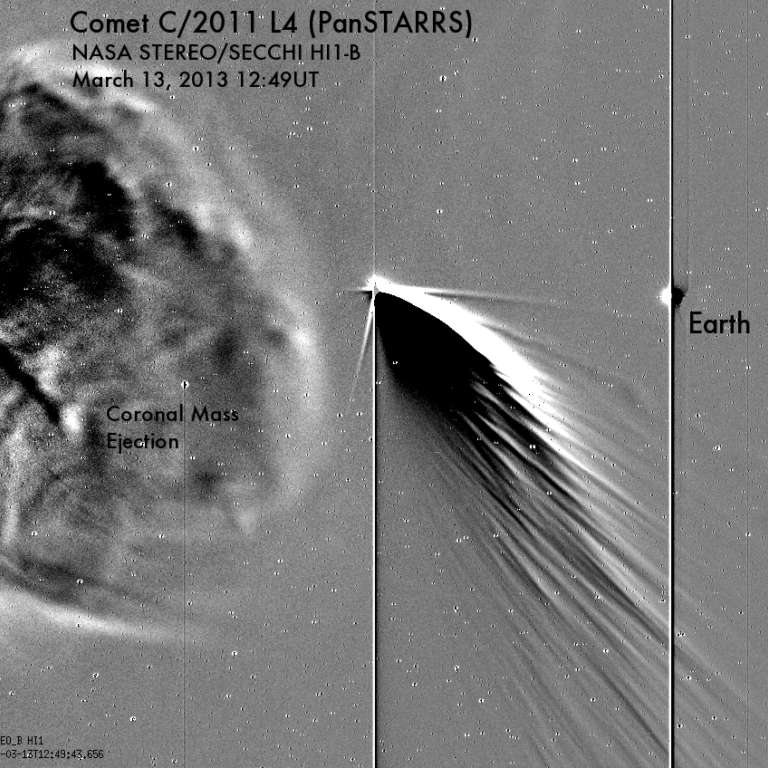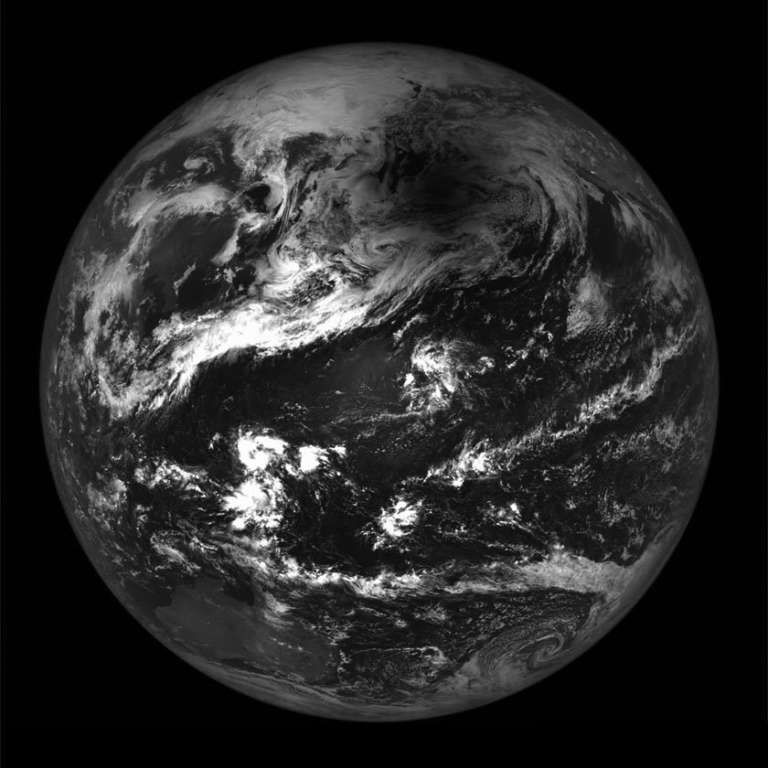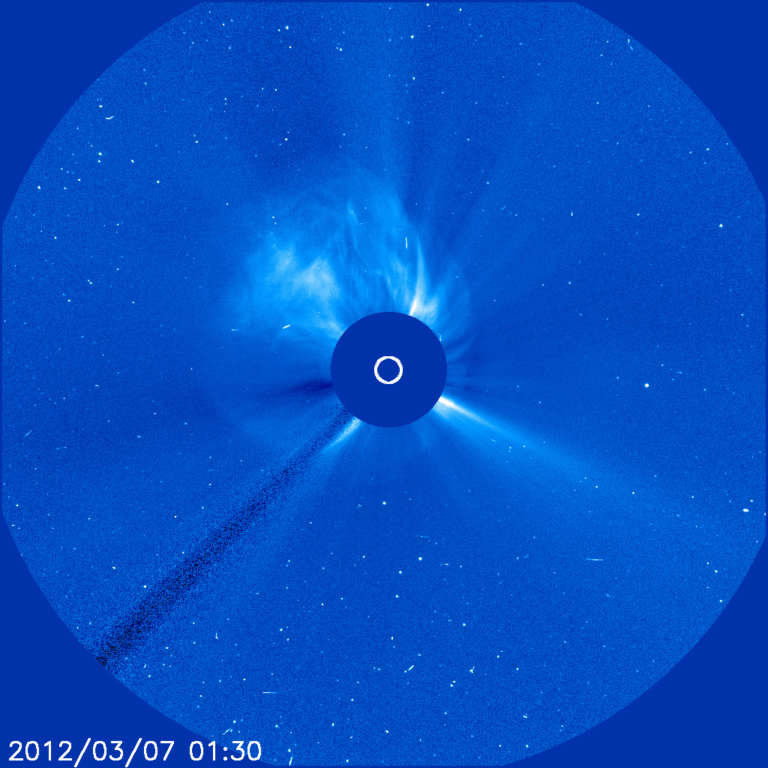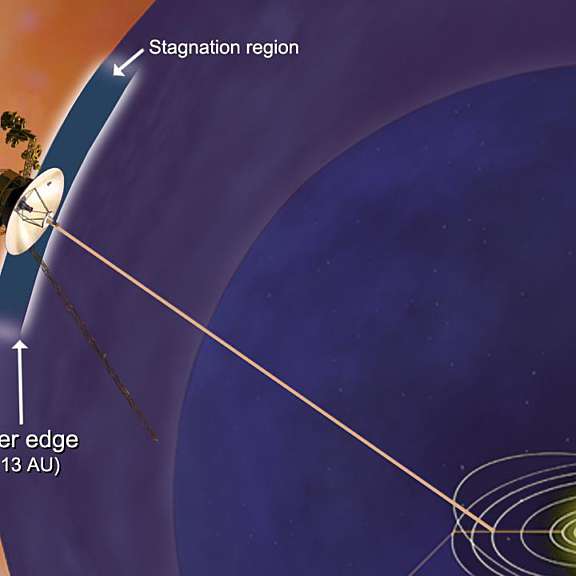All
All
Stories, updates, insights, and original analysis from The Planetary Society.
IRIS safely in orbit, ready to eye sun's atmosphere
IRIS, the Interface Region Imaging Spectrograph spacecraft, was launched from Orbital Science Corporation's Stargazer carrier aircraft over the Pacific Ocean at 7:27 p.m PDT.
Comet PANSTARRS from the other side of the Sun!
Comet PANSTARRS is delighting northern hemisphere viewers right now. But it's also big, bright, and beautiful to the STEREO spacecraft.
Curiosity catches sunspots along with Phobos and Deimos transits
Curiosity has been shooting photos of the Sun as Phobos and Deimos cross its face, and -- as far as I can tell -- captured sunspots as well.
RBSP to explore decades-old radiation belt mysteries
NASA's Radiation Belt Storm Probes will shed new light on the Van Allen Radiation Belts, a dangerous region of space in our planet's backyard.
Yet more planet transits
A reader comment on Jay Pasachoff's post last week about Venus transits viewed from other planets had me asking whether transits of other planets were also interesting to astronomers. Jay provided some answers!
More Venus transits in 2012
A transit of Venus as seen from Jupiter may be observed by Hubble on September 20 and a transit of Venus as seen from Saturn will be observed by Cassini on December 21.
Not Necessarily Your Last Venus Transit!
Unless you are lucky and healthy enough to live for another 105 years, tomorrow will be your last chance to see a Venus transit from the surface of the Earth. But this need not be the last transit of Venus that you will ever see.
A solar eclipse - as viewed from the Moon
A solar eclipse isn't just a spiffy sight to Earthlings; it looks pretty cool to lunar dwellers as well.
Some Details About Transits of Venus
The upcoming rare transit of Venus is one step in a long dance among Earth, Venus and the Sun. Transits of Venus follow a peculiar pattern—two transits 8 years apart, then 105.5 years with no transits, then two transits 8 years apart, then 121.5 years with no transits, for a total cycle of 243 years—and thereby hangs a tale.
Cool video: Jupiter, its moons, a comet, and...the Sun?
Here's a neat video posted by SungrazerComets (the Twitter identity of the U.S. Naval Research Laboratory's Sungrazing Comets website) this morning.
Making eclipse magic
How to enjoy a solar eclipse with your kids, making shadow magic with a pinhole viewer.
Night Sky Guide for Summer 2012
This summer should provide great opportunities for stargazers to view planets, meteor showers, the transit of Venus, and for some, the annular solar eclipse. Check out these highlights of what you can look forward to this summer.
Solar storm in progress
Last night the Sun unleashed a large coronal mass ejection in our direction. Here is a compilation of images from SOHO's two LASCO cameras, plus a prediction from the new space weather prediction model that I learned about at the American Geophysical Union in December. The storm will arrive at Earth on March 8.
Solar flares from Skylab
Before automated space observatories like SDO could send pictures and videos of solar phenomenon in real-time, humans had to do it manually, as in the case of the groundbreaking Skylab space station missions, which featured the Apollo Telescope Mount.
The state of Earth observation, January 2012
As of November 2011, the Earth Observing Handbook counts 109 active missions to study the Earth as a planet, with 112 more approved and planned for the future. Jason Davis provides an overview of key current and upcoming earth-observing missions.
Video: Comet Lovejoy entered SOHO's LASCO C3 field of view this morning!
An animation of comet Lovejoy entering the field of view of one of SOHO's Sun-monitoring cameras.
Good news, everyone: We're getting as good at space weather forecasts as we are at Earth weather forecasts
Emily reports from the Fall 2011 American Geophyisical Union meeting about advancements in space weather prediction.
From the 2011 Fall Meeting of the American Geophysical Union (AGU): Voyager 1 at the edge of the solar system
A report on a press briefing about Voyager 1 at the Fall 2011 American Geophyisical Union meeting. The spacecraft has entered a new region between our solar system and interstellar space, which scientists are calling the stagnation region.
The scale of our solar system
Space.com has taken advantage of the infinitely scrollable nature of Web pages to produce a really cool infographic on the scales of orbital distances in the solar system.


 Explore Worlds
Explore Worlds Find Life
Find Life Defend Earth
Defend Earth


 Sun
Sun Mercury
Mercury Venus
Venus Earth
Earth Mars
Mars Jupiter
Jupiter Saturn
Saturn Uranus
Uranus Neptune
Neptune Small Bodies
Small Bodies














